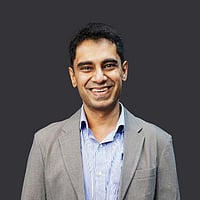New York is a city that never sleeps and never slows down for anyone or anything — not for traffic, not for weather, and definitely not for construction delays. While that makes it one of the most exciting places in the world to live, it also makes it a nightmare for maintenance, especially when all of it has to be done without the citizens ever finding out.
That’s what makes electrical contracting firms like Sajiun Electric so critical to the city’s inner workings. For nearly three decades, the company has quietly anchored the city’s most critical institutions, from schools to housing authorities, courthouses to hospitals. Originally founded in 1965 and now run by second-generation leader Richard Sajiun, this New York company has built its reputation on sheer reliability and has now become one of the most trusted electrical contractors working with the city’s most critical infrastructure.
Private to Public: A Journey
Sajiun Electric Inc. began as a modest family-run shop in the Bronx, focused primarily on residential and small commercial jobs. In 1995, when Richard Sajiun took the reins from his father, he quickly recognized the limitations of chasing unpredictable private contracts. He found an opportunity in public contracting, an area many electricians avoided due to its complex regulations and drawn-out payment schedules. Only, where others saw miles of red tape, he saw long-term security and a chance to scale with structure.
Richard spent the better part of two years learning how city procurement worked, getting his certifications in order, and building a strong foundation of back-end infrastructure that government agencies expect: safety protocols, documentation systems, insurance compliance, and a team trained in paperwork as much as wiring. Today, Sajiun Electric’s portfolio includes work in city-run hospitals, NYCHA housing, school systems, correctional facilities — high-stake environments where one electrical failure might mean a complete shut down in a good part of the city.
How Richard Sajiun Battles New York’s Bureaucracy
Working in the public sector means playing by the book, literally. Every job comes with stacks of guidelines, inspection protocols, and paperwork. However, while many contractors struggle under that load, Richard Sajiun has made it a competitive edge for his company.
A lot of it comes down to Richard’s deliberate investment in disciplined back-office operations. His team includes full-time compliance coordinators who always stay ahead of DOB requirements and procurement regulations. The on-ground electricians are trained in documentation as an addition to their craft; they know when to take photos, when to file daily logs, and how to work alongside union inspectors without friction.
“We treat paperwork like another layer of quality control,” explains Richard. “In public work, one missed document can cost you a month. So we integrate that discipline into our workflow itself.”
The Secret to Survival in a High-Churn Industry
The public construction space in New York is notoriously brutal, and only a few survive it. Contracts are awarded slowly and paid out even more slowly. Many firms enter the market hoping to cash in on a few large jobs, only to burn out within two or three years under the weight of compliance, insurance, and thin margins.
Sajiun Electric, on the other hand, is now in its fourth decade.
This kind of longevity is rare in this field, but it’s not by accident. Along with the discipline of compliance, Richard has also developed efficient systems that prepare for the unexpected — paperwork, aging infrastructure of the city, weather unpredictability, access timings for the work, payment delays, and any possible setbacks in the job. Additionally, all of his fieldwork is backed by formal processes, and every project goes through a detailed post-mortem to refine future operations.
Richard Sajiun Let the Work Speak for the Brand
While many construction firms try to dazzle with sleek websites and drone-shot videos of famous buildings of New York, Sajiun Electric has stayed largely behind the scenes. There are no commercials, no influencer partnerships, and definitely no advertisements. Richard didn’t even create a website or a social media page for his company.
This approach might seem counterintuitive in a world obsessed with branding, but Sajiun Electric refuses to chase growth for the sake of optics. They work with real data from the field and build lasting relationships with partners, investors, and clients. Of course, it helps that the public sector where they work values substance over transient fizzle and finds this no-nonsense approach appealing. As an added bonus, it has also helped Sajiun Electric avoid the distractions and volatility that come with the private development market.
Public Agencies Keep Coming Back to Sajiun Electric
New York’s public contracting world depends heavily on referrals and repeat business since agencies work only with firms they find reliable. Building such a loyal partnership with government agencies is incredibly tough, but that’s something Richard Sajiun has turned into his company’s strength. Multiple four-year contracts are common with Sajiun Electric, and because Richard’s team is known for meeting timelines and respecting budgets, they often get called in to even rescue delayed projects started by other firms.
“We’re not just wiring buildings,” Richard said, “We’re helping the city stay functional, safe, and up to code. That’s a responsibility we take seriously.”
This dependability has earned Richard’s business a reputation not just as skilled electricians, but as problem-solvers who understand the inner workings of the systems well. In a city as fast-moving and politically charged as New York, that matters more than anything.
At a time when labor shortages, inflation, and supply chain issues are disrupting the construction industry, Sajiun Electric’s methodical approach feels like a blueprint worth studying. In the end, you won’t see their logo splashed across a skyscraper, but you will find their work silently powering places that matter the most: schools, hospitals, fire stations — the city’s present and its future.


























